7 Portable Tools to Make a Full Image Backup of USB Drives
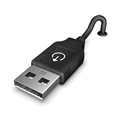
Creating a full Windows backup by using the built it Windows Imaging Tool, Acronis TrueImage, EaseUs Todo Backup, or Macrium Reflect is pretty common for experienced computer users. However, it’s recommended for all users to keep backups in case of crashes or hardware failures. If your system is unable to boot, start up the computer with the imaging software’s rescue media and it can restore your system back to the time when you created the image.
Imaging is different from just backing up your files or selected folders because a complete copy is created for the whole hard drive or partition and its structure. The problem with some imaging software is it doesn’t allow creating backup images for external devices such as a USB flash drive, digital camera, or MP3 player. Or perhaps you prefer not to install a complete software package just to back up a small flash drive.
For someone with one or two flash drives, it’s useful to have full backup copies so you can swap between them when required. Here are 7 free and portable tools that you can use to create backup images of USB memory sticks, hard drives, memory cards, and MP3 players, then restore them when you need to.
1. PassMark ImageUSB
ImageUSB is by PassMark software that make tools like Performance Test, BurnInTest, and OSFMount. This little tool is free and portable with a few very handy features such as being able to read and create images from more than one USB flash drive at once and also write a single image back onto more than one flash drive at the same time.
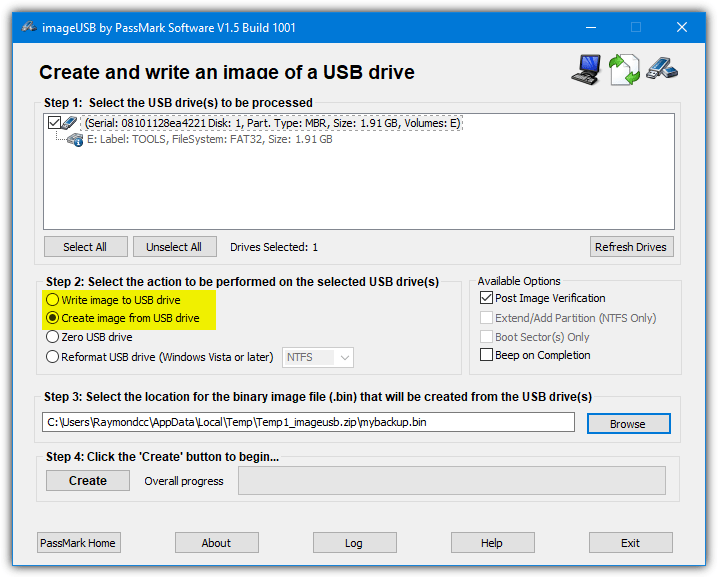
Everything is laid out into numbered steps. Select the USB drive(s) to work on and choose whether to write to the selected drive or create an image from it. Then browse for the backed up file or enter a new name and press the button in step 4 to start the process. You can verify a newly created image or the contents of a written USB drive, uncheck the “Post Image Verification” box if you don’t want to verify.
Backup images are created as uncompressed BIN files. ImageUSB can write those BIN files or ISO image files onto USB. However, writing an ISO file can be troublesome and you might not be able to read the drive contents properly due to the file systems used by ISO images. A log file is created in the same folder for each BIN image which includes MD5/SHA1 checksums for the file and any verification results.
2. Rufus
Rufus is a USB tool we’ve mentioned before that can perform a number of different functions such as creating bootable USB media. A lesser known feature added in 2018 is the ability to save the contents of the selected USB drive as a disk image. In this case, the image is saved in the popular Virtual Hard Disk format (VHD). Rufus has an installer version but most users probably just use the portable executable.
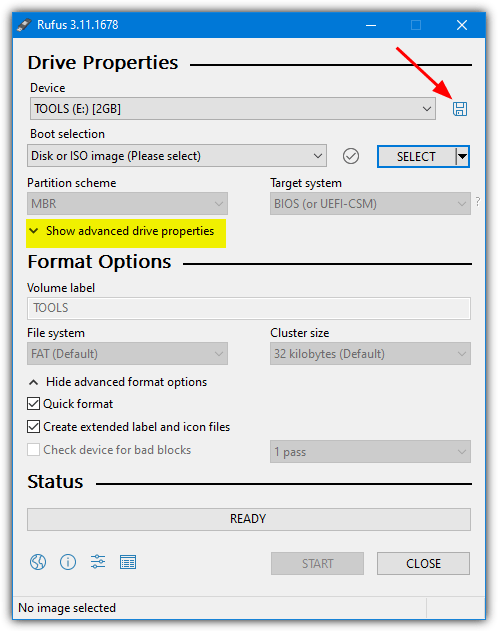
Saving the USB device as a VHD file in Rufus is very easy. All you have to do is make sure the USB media to copy is selected in the Device drop down at the top, click “Show advanced drive properties” and an icon of a floppy disk will appear at the top right. Cick on the icon, give the output file a name, and press Save. The whole of the device will be saved to an uncompressed VHD image.
Writing the VHD file back to USB is just a case of making sure “Disk or ISO image” is the Boot selection type and pressing the SELECT button to browse for the previously saved VHD file. The useful thing about using the VHD format is the files can be mounted natively in Windows as virtual drives. You can easily view and even edit the contents of the backup image before writing it back to USB later on.
3. USB Image Tool
USB Image Tool is a portable program that can create full images of USB memory sticks, MP3 players, and any other storage devices that are mounted as USB drives. The program has a drop down option to let you select between taking an image of the whole USB drive or just the first volume on the device. That’s useful if your device has more than one partition although the boot sector will not get saved in Volume mode.
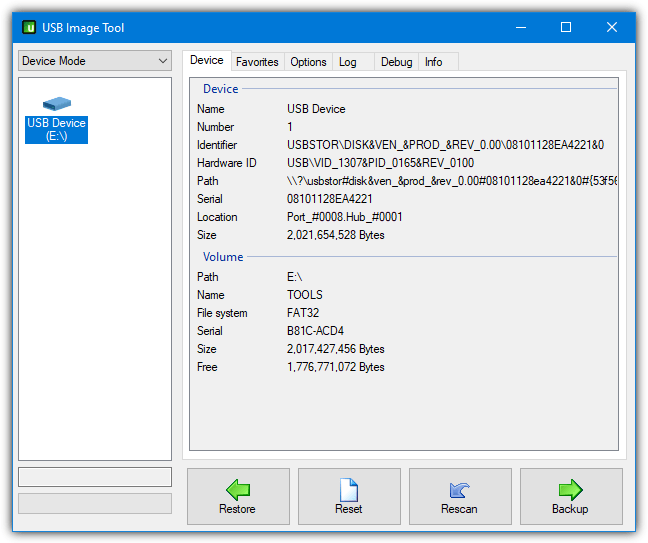
Select the USB drive, click Backup, and choose the file name and save folder. USB Image Tool backs up drives to an uncompressed IMG file by default. To compress an image file, click the “Save as type” dropdown when asked where to save the file. There are options of saving as Zip compressed IMZ or GZip compressed IMG.GZ files. Compression might take a bit longer but could reduce the size of a large image file.
There’s also a Favorites tab where you can keep backup locations stored for quick access. Some options are available such as creating an MD5 checksum with the backup file, showing non-removable devices, verifying the backup, and defining a naming structure for the backup files. The .NET Framework 4.7 is required for non Windows 10 users. A command line usbitcmd.exe is included for advanced usage, such as in scripts.
4. HDD Raw Copy Tool
Although the name might suggest this program is only meant to copy hard drives, it is also specifically designed to handle all types of media devices. USB flash drives, hard drives, and all types of flash based media and cards are supported. HDD Raw Copy Tool makes a complete sector by sector duplicate of the device irrespective of what partitions or operating systems are present.
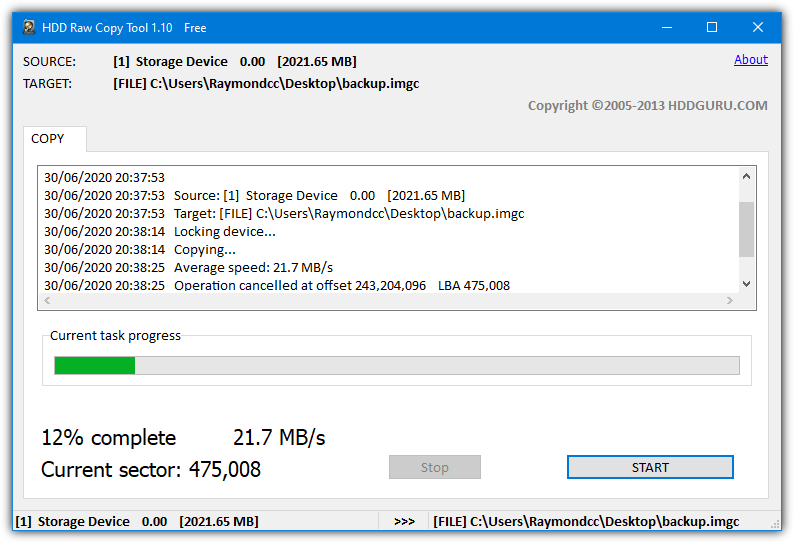
On start, you are shown the Source window where you select the USB drive to copy. The next window is the Target window where you have to double click on the File option in the devices list and choose a save name and location. The default save option is a compressed IMGC file although you can select an uncompressed IMG format from the “Save as type” drop down.
Click Continue and then Start to begin the backup. As the backup file will be compressed, it could be much smaller than uncompressed backup files that will be the size of the whole drive. Restoring a backup is a case of swapping things around and selecting the backup file in the Source window and the USB drive in the target window. An installer version is available but the portable version does the job perfectly fine.
On page two we show you more portable image backup tools and also show how to compress backup files more efficiently.





User forum
34 messages